
German postcard by Photochemie, Berlin, no. K. 2406. Photo: Atelier Ebert, Berlin.

German postcard by Rotophot in the Film Sterne series. Photo: Becker & Maass. Collection: Didier Hanson.

German postcard by Rotophot in the Film Sterne series. Photo: Becker & Maass. Collection: Didier Hanson.
Sex Education Films
Anita Berber was born in Leipzig (some sources say Dresden), Imperial Germany in 1899. She was the daughter of Felix Berber, a classical violinist and his wife Lucie Berber, a cabaret singer. Her parents divorced two years later and Anita was raised mainly by her grandmother in Dresden. In her teens, she studied dance under founder of rhythmic gymnastics Emile Jacques-Dalcroze and ballet teacher and film actress Rita Sacchetto. By the age of 16, she made her debut as a cabaret dancer in Berlin, and began modelling for the women's magazines Die Dame and Elegante Welte.
Between 1918 and 1925, she appeared in more than 20 silent films. She often worked for director Richard Oswald. Their films included the Aufklärungsfilm (sex education film) Die Prostitution, 1. Teil - Das gelbe Haus/Prostitution (Richard Oswald, 1919), the adventure comedy Die Reise um die Erde in 80 Tagen/Around the World in Eighty Days (Richard Oswald, 1919) with rising-star Conrad Veidt as Phileas Fogg, and the fantasy thriller Unheimliche Geschichten/Sinister Tales (Richard Oswald, 1919).
She also played in the horror film Nachtgestalten/Figures of the Night (Richard Oswald, 1920) starring Paul Wegener, and the drama Lucrezia Borgia/Lucretia Borgia (Richard Oswald, 1922) starring Liane Haid.
Alongside Conrad Veidt, Anita Berber also appeared as Else in the ground-breaking, gay-themed film Anders als die Anderen/Different From The Others (Richard Oswald, 1919), co-written by Dr. Magnus Hirschfeld. Berber had a minor but significant role in Fritz Lang's Dr. Mabuse, der Spieler - Ein Bild der Zeit/Dr. Mabuse – The Gambler (Fritz Lang, 1922) featuring Rudolph Klein-Rogge as the arch-criminal.
Berber also appeared in the horror film Der Graf von Cagliostro/The Count of Cagliostro (Reinhold Schünzel, 1920), Wien, du Stadt der Lieder/Vienna, City of Song (Alfred Deutsch-German, 1923) and finally in Ein Walzer von Strauß/A Strauss Waltz (Max Neufeld, 1925).
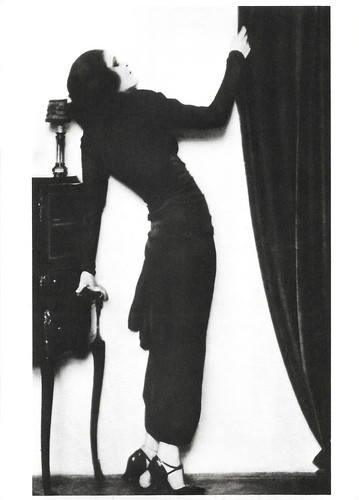
West German postcard by Gebr. König Postkartenverlag, Köln (Cologne), Serie 103, no. 1 of 10. Photo: collection: L. Fischer.

West German postcard by Gebr. König Postkartenverlag, Köln (Cologne), Serie 103, no. 2 of 10. Photo: Alex Binder. Anita Berber in 'Koreanischer Tanz' (Korean Dance).
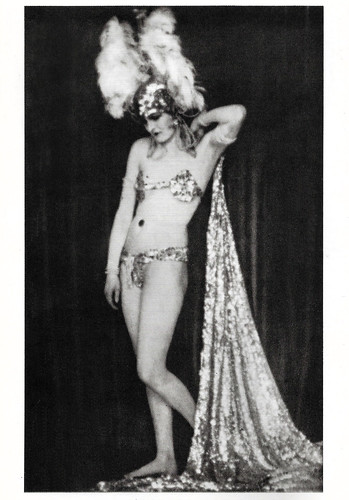
West German postcard by Gebr. König Postkartenverlag, Köln (Cologne), Serie 103, no. 3 of 10. Photo: Dora Kalmus. Anita Berber in dance costume 'Hellogabal', 1922.

West German postcard by Gebr. König Postkartenverlag, Köln (Cologne), Serie 103, no. 5 of 10. Photo: Dora Kalmus. Anita Berber and Sebastian Droste in a scene from the dance production 'Martyren' (1922).
Scandalously Androgynous
Anita Berber began dancing nude in 1919. Scandalously androgynous, she quickly made a name for herself. She wore heavy dancer's make-up, which on the black-and-white photos and films of the time came across as jet black lipstick painted across the heart-shaped part of her skinny lips, and charcoaled eyes. She had cut her auburn hair fashionably into a short bob as can be seen in Otto Dix’ iconic painting 'Die Tänzerin Anita Berber' (The Dancer Anita Berber) (1925).
Her dance partner was the expressionist poet Sebastian Droste, who also became her second husband. He was skinny and had black hair with gelled-up curls much like sideburns. During their dances, neither of them wore much more than low-slung loincloths and Anita occasionally a corsage worn well below her small breasts. They performed fantasias with titles such as 'Suicide', 'Morphium', and 'Mad House'.
In 1923, they published a book of poetry, photographs, and drawings called 'Die Tänze des Lasters, des Grauens und der Ekstase' (Dances of Vice, Horror, and Ecstasy), based on their performance of the same name. Full of Expressionist imagery, the book offers a glimpse into the angst and cynicism shadowing their artistic and personal existences.
Ruth M. Perris at lghbtq.com: “She brought flamboyant eroticism, exotic costuming, and grotesque imagery to performances danced to the music of composers such as Debussy, Strauss, Delibes, and Saint-Säens.
A pioneer of modern expressive dance, Berber was at first taken seriously as an artist, but soon she became better known for her scandalous personal and professional life.”
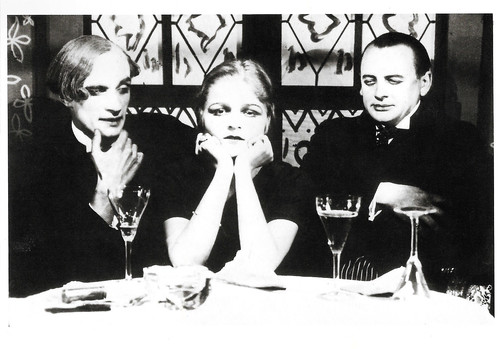
West German postcard by Gebr. König Postkartenverlag, Köln (Cologne), Serie 103, no. 7 of 10. Photo: Collection L. Fischer. Anita Berber, Conrad Veidt and Reinhold Schünzel in Unheimliche Geschichten/Sinister Tales (Richard Oswald, 1919).
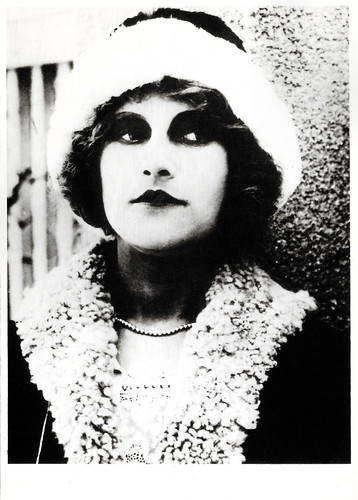
West German postcard by Gebr. König Postkartenverlag, Köln (Cologne), Serie 103, no. 8 of 10. Anita Berber in Die vom Zirkus/Those from the circus (William Kahn, 1922).

West German postcard by Gebr. König Postkartenverlag, Köln (Cologne), Serie 103, no. 9 of 10. Photo: Collection L. Fischer. Anita Berber in Irrlichte der Tiefe/Lights of the abyss (Fritz Freisler, 1923).
Tabloid Reports Of Lesbianism, Drug Use, And Hotel Orgies
Anita Berber married three times. Her first husband was the wealthy young screenwriter Eberhard von Nathusius. After their divorce, she dated a string of beautiful women, including, allegedly, the young Marlene Dietrich. Stylish bar owner Susi Wanowski became her lover, manager and secretary. Her second marriage to Sebastian Droste ended in 1923. The following year, she married American dancer Henri Chatin-Hoffman, rumoured to be gay. She toured Europe with him, continually generating tabloid reports of lesbianism, drug use, and hotel orgies.
After a tour of The Netherlands in 1926, Berber collapsed physically and sought refuge with Dr. Magnus Hirschfeld. She was addicted to cocaine, opium and morphine. According to Wikipedia, “one of Berber's favourites was chloroform and ether mixed in a bowl. This would be stirred with a white rose, the petals of which she would then eat.” Aside from her addiction to narcotic drugs, she was also a heavy alcoholic. In early 1928, Anita Berber suddenly gave up alcohol completely.
According to Mel Gordon, in The Seven Addictions and Five Professions of Anita Berber: Weimar Berlin's Priestess of Debauchery, she was diagnosed with severe tuberculosis while performing in nightclubs in Greece and the Middle East. After collapsing during a performance in Damascus, she returned to Germany.
Anita Berber died in a Kreuzberg hospital in November 1928, just 29. She was said to be surrounded by empty morphine syringes and was buried in a pauper's grave in St. Thomas Cemetery in Neukölln.
Although her gravestone vanished, Anita Berber has not been forgotten. Rosa von Praunheim’s wonderful film Anita - Tänze des Lasters/Anita - Dances of Vice (1987) centres around the life of Anita Berber. In 1991, the Deutsche Post used the Otto Dix painting of Anita on one of its stamps.

German postcard by Verlag Ross, Berlin, no. 279/1. Photo: Becker & Maass.
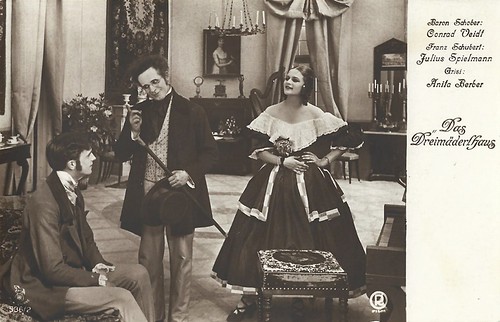
German postcard in the Film Sterne series by Rotophot, no. 536/2. Photo: Richard-Oswald-Film. Julius Spielmann as Franz Schubert, Anita Berber as Grisi and Conrad Veidt as Baron Schober in Das Dreimäderlhaus/The House of Three Girls (Richard Oswald, 1918).

German postcard in the Film Sterne series by Rotophot, no. 536/6. Photo: Richard-Oswald-Film. Anita Berber and Julius Spielmann in the German silent film Das Dreimäderlhaus/The House of Three Girls (Richard Oswald, 1918), considered a lost film and dealing with the life of composer Franz Schubert (Julius Spielmann, the man with spectacles at the right).

Postcard and stamp of ‘Die Tänzerin Anita Berber' by Otto Dix. Collection: Sidolix@Flickr.
Sources: Mel Gordon (The Seven Addictions and Five Professions of Anita Berber: Weimar Berlin's Priestess of Debauchery), Ruth M. Pettis (glbtq.com - now defunct), James Conway (Strange Flowers), Cabaret Berlin, Wikipedia and IMDb.
This post was last updated on 11 March 2023.
No comments:
Post a Comment